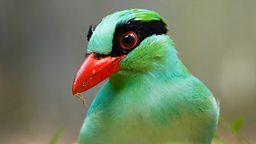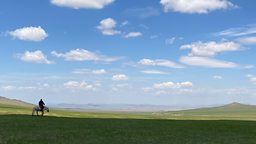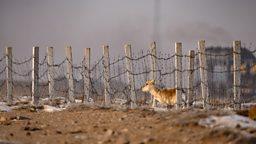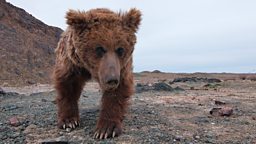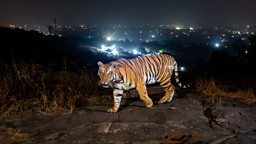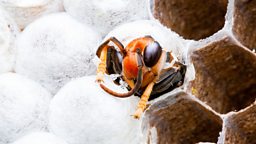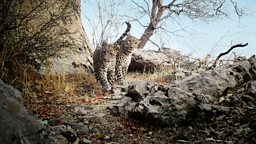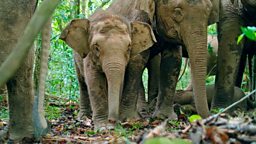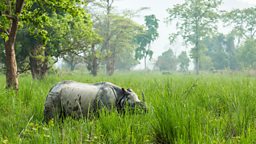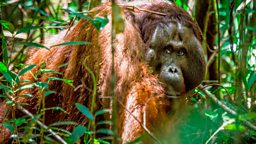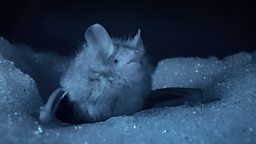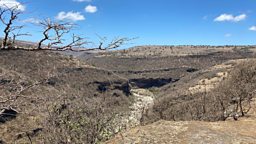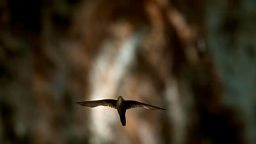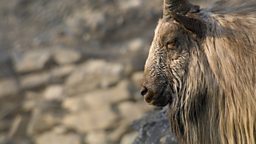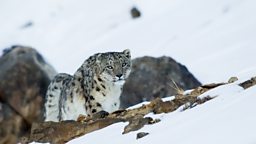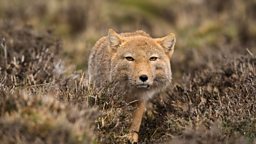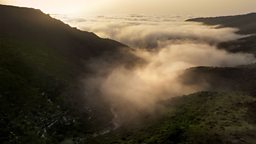Filming the greater one-horned rhinoceros
By Ed Anderson, Assistant Producer
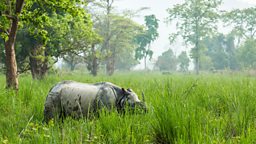
It’s not a pleasant feeling being charged by a colossal wild animal.
It鈥檚 not a pleasant feeling being charged by a colossal wild animal.
I was in Chitwan National Park, Nepal. Our guide had walked us to a quiet spot on the edge of a clearing, where we waited patiently with a heavy long lens camera, supported by an even heavier tripod. There were just three of us, to keep disturbance to a minimum: cameraman Steven McGee-Callender, our expert guide Tam Bahadur and myself.
Apparently a female one-horned rhinoceros was about to appear – and she had a calf with her. This was a scene we were very keen to film, but our guide was at pains to explain that we needed to keep very quiet so as not to disturb the animals. At the first sign of any anxiety, we were to “distance ourselves” as rapidly as possible. Rhinos can be very dangerous, and mothers in particular will defend their young fiercely. We planned our escape route: a few metres behind us a ladder led to the safety of a platform high in the trees.
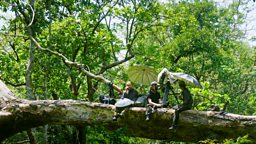
We waited nervously. Suddenly there was a slight movement amongst some leaves and the huge, primordial form of a mature female forest rhinoceros emerged from the trees. Her thick, warty, armour-plated hide – fresh from bathing – was glistening in the sun. She plodded slowly, gently, deliberately; all the time looking around for danger. It was then that we noticed what had been hidden behind her: a much smaller and sweeter version of the mother: a calf. Breathtakingly cute, it padded tentatively out into the clearing.
Breathtakingly cute, it padded tentatively out into the clearing.
The mother noticed us almost immediately. She turned for a better look and, within only a couple of seconds, raised her enormous head. This was a warning sign we had heard about. When a rhino lifts its head and looks down their snout at you, a charge may follow… and just like we were warned, she did start to run – straight towards us! I tugged frantically at Steven, who with his eye looking down the viewfinder, was not aware of the imminent danger. We grabbed the camera and tripod (without those the shoot would be over) and began “distancing ourselves” as fast as we could towards the ladder. Everything was a bit of a blur. I’m not sure how fast we were actually moving whilst carrying such heavy equipment, but the ladder seemed to appear rapidly in front of us, and we started climbing.
When we turned round, we could see that the mother had already gone back to her normal business: grazing, plodding, keeping watch over her calf. She was right to be cautious; calves have been known to be killed by jealous male rhinos, and a calf on its own cannot defend itself from a rogue elephant, or a hungry tiger.
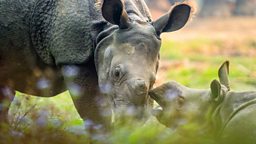
We didn’t get the shot we had hoped for, but we were all intact, and the rhino family didn’t seem to have been overly disturbed. This wouldn’t be the last time we would have to beat a hasty retreat from this area – later, we would have run-ins with elephants as well as dangerous storms. But keeping a healthy distance from these astonishing animals is really important: this is their home after all. And what a home: although Nepal is not known for its rhinos, Chitwan, in the country’s lowlands, is home to a huge variety of animals: sixty-eight mammal species including elephants, tigers, rhinoceros and many deer. Four hundred and eighty species of birds, and fifty-five species of amphibians and reptiles including the rare gharial crocodile.
Although immensely strong and seemingly impregnable, rhinos here are also endangered.
Although immensely strong and seemingly impregnable, rhinos here are also endangered. The story of rhino conservation in Chitwan National Park has actually been one of resounding success. From only sixty individuals in the 1960s, with their numbers teetering dangerously low due to poaching, today there are over seven hundred individuals, thanks to the efforts of dedicated conservation workers and strict government policies.
The main threat for a rhino in Chitwan is now not from poaching, but from other rhinos. Half of male rhinos die from wounds from fighting other rhinos. And occasionally rhino calves are orphaned. When this happens, the National Trust for Nature Conservation in Nepal asks Lal Bahadur Mahatara to act as a surrogate parent. He’s a professional rhino carer; feeding, guiding and keeping watch over the orphaned calves until they grow big enough to take care of themselves. When they are ready, they’re released back into the wilds of the park. Lal's is an important job: he needs to be as vigilant as a mother rhino, and juvenile rhinos can be playful, energetic, difficult to stop: in short a real handful.
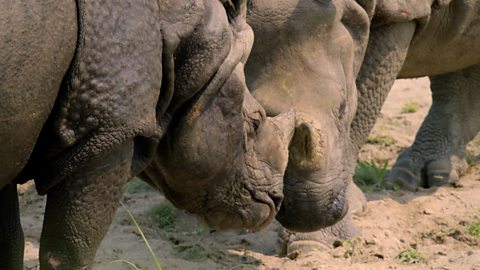
The hidden world of rhinos
Discover how rhinos fight for mates, care for their young鈥� and flirt with each other.
